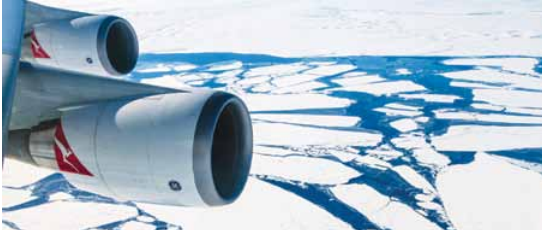It’s 2.30am on the last day of a cruise that has taken me and 200 others from Canada to Greenland, through fiords whose granite walls tower above our expedition vessel and past icebergs and old Viking settlements. I have to finish packing but it’s difficult when I can still see light through my cabin window. So barefoot and wearing just a light dress I go out on deck, camera in hand, and take my last shot of the sky – streaked pink and grey – just before it fades to black.
Moored in Kangerlussuaq Fiord, one of the longest in Greenland and located just a few degrees inside the Arctic Circle, we experience almost 24 hours of daylight. And as it’s summer in the north, the days can be quite mild. It’s another story in the ice-strewn water, and I speak from experience. One of the thrills and traditions of Arctic cruising, though completely optional of course, is to take the polar plunge – that is to jump into glacier-fed water and then get out as soon as you can.
I’m travelling with family-owned cruise company Adventure Canada whose CEO, Cedar Swan, is on board with her husband and children and both her siblings and their families. The daughter of the company’s founder Matthew Swan, Cedar urges each and every one of us to leave our fears behind, take a leap of faith and jump into the fiord from our ship. In return the company will donate $50 per plunger to an Inuit charity.
Despite much anxiety I follow 50 others down to the lowest deck, throw off my snuggly bath robe and wait in line for my turn. It’s easier to jump in than to think about it any further, so in I plunge and once I bob up, swim the fastest 10 metres of my life and clamber up the ladder, I finally feel the cold. But once I skull a vodka shot and re-robe, all is well with the world again and I feel like a million dollars!
From there the day just keeps getting better, with a visit to the small community of Kangaamiut, a real picture-postcard village where each wooden house is painted a vibrant colour – be it red, yellow, green, blue and even purple. One needs as much colour as one can get in Greenland, for while we passengers are lucky to have some magical sunny days in mid-July, much of the year is enveloped in darkness and temperatures plummet seriously below zero.
With only two scheduled international flights – one from Copenhagen and the other from Reykjavik – getting to Greenland is far from easy. Travelling by ship is the most convenient, comfortable and convivial way to go.
We start our 12-day ‘Greenland and Wild Labrador’ cruise in St John’s, capital of Newfoundland and Labrador province, and the most easterly city in North America. A precruise tour takes in the highlights including Signal Hill, where Cabot Tower presides over the city honouring John Cabot who explored the region in 1497 and where Marconi received the first transatlantic radio signal, sent from England in 1901.
As we cruise to the tip of Newfoundland we learn that Vikings led by Leif Erikson were in the area 500 years before Cabot and we visit their long-abandoned base camp at a place now called L’Anse Aux Meadows. Crossing the narrow channel to Labrador we continue north spotting humpback whales and beautiful blue-tinged icebergs as we go. Our days on board are filled with talks on history, culture and geography, and everyone is required to attend the lecture on polar bear safety.
Once in Labrador we’re in bear country and all shore excursions, such as the seven-kilometre hike I do to a waterfall and various ambles along deserted beaches, are accompanied by trained guides carrying highpowered rifles and other bear deterrents. We do spot polar bears, but from a safe distance from either our ship, the Ocean Endeavour, or the Zodiac landing craft.
It is also Inuit country, the land of the indigenous people who have inhabited Canada’s polar regions for 5000 years. In 2005 some 72,520 square km of Labrador was handed back to the original owners to form Nunatsiavut, a self-governing region, whose name means ‘our beautiful land’. We visit its capital Hopedale with a legislative building shaped like an igloo and the stunning Torngat National Park, a sacred land of jagged mountains and breathtaking fiords.
From the tip of Labrador, we cross the Davis Strait to Greenland, arriving in the capital Nuuk, a city of just 16,000 and the world’s most northern capital. With just three days we scarcely skim the surface of Greenland, but with a polar plunge and a walk on the massive ice sheet (the second largest in the world after Antarctica), it’s a thrilling adventure none the less.



